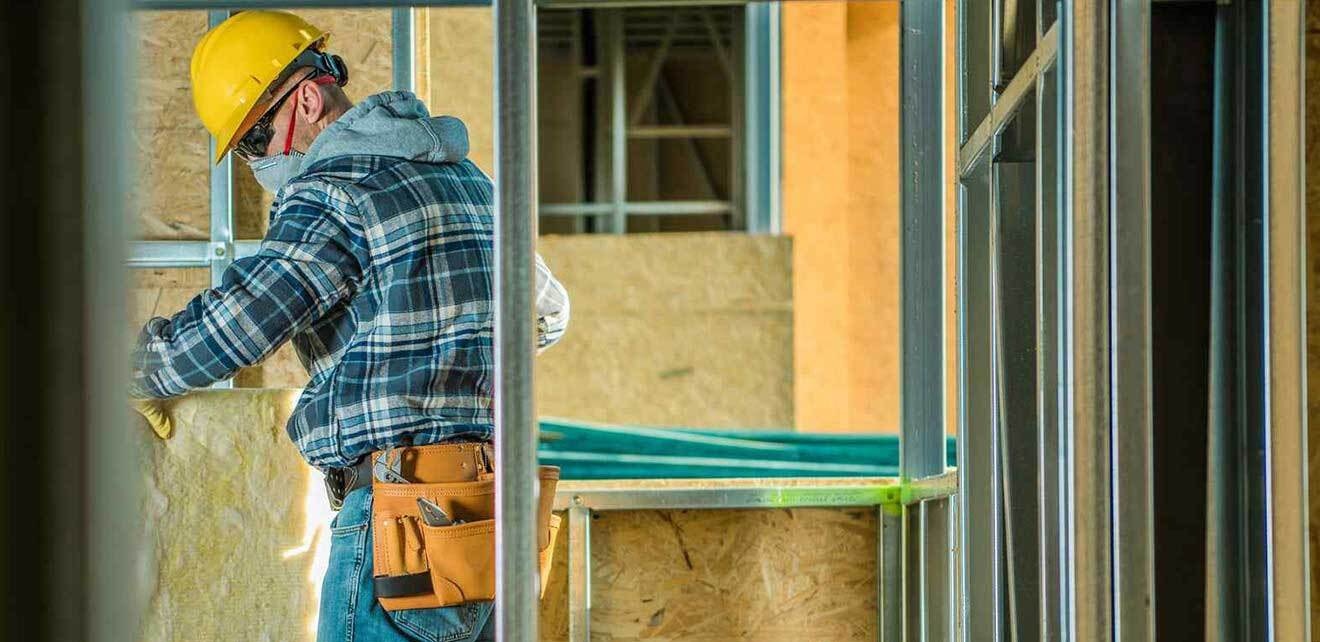Home > Blog
Read Time — 5 minutes
Help Residential Construction Workers Comply with COVID-19 Guidelines

Industries around the world are trying to map out their “new normal” of business practices in the midst of the COVID-19 pandemic – and residential construction is no different. To help the industry keep up with the latest best practices, the Occupational Safety & Health Administration (OSHA) has published a webpage of guidance for construction workers.
Overall, their advice is to “Assess the hazards to which your workers may be exposed; evaluate the risk of exposure; and select, implement, and ensure workers use controls to prevent exposure.” Specifically, they recommend you use administrative controls, or work practice controls, to meet these goals. While updated controls may be necessary for almost all areas of on-site policy, from parking to sanitation to site cleanup, we’d like to focus here on the ones that are made so much easier by replacing your paper-based administrative practices with a mobile, cloud-based solution
Implement Safe Work Practices
According to OSHA, here are a few of the safest guidelines for work practices:
- Screen all workers in advance of their arrival at any job site for signs and symptoms of COVID-19.
- Adopt staggered work schedules, e.g., provide alternating workdays or extra shifts, to reduce the total number of employees on a job site at any given time and to ensure physical distancing.
- Coordinate site deliveries in line with the employer’s minimal contact and cleaning protocols. Delivery personnel should remain in their vehicles if at all possible.
- Keep in-person meetings (including toolbox talks and safety meetings) as short as possible, limit the number of workers in attendance, and use social distancing practices.
A digital documentation solution designed for the construction industry can implement all of these guidelines, and more (see the following sections), by limiting in-person communications and providing digital document management. When all of your necessary job documentation is available online, there’s no need to physically hand off a paper or schedule long meetings. Once a job record is updated by anyone (no matter where they are), the change is saved automatically, is available immediately for anyone to see, and is digitally archived with the job. For more details, let’s take those OSHA bullet points one by one.
Worker screening: Other than the on-site temperature checks that are sometimes recommended in some areas, this screening can be done through the completion of an online survey where employee responses are instantly processed and archived, even before they get out of their vehicle. The survey takes just a minute or two on their mobile device.
Staggered work schedules and site deliveries: Digital documentation makes it easy to develop, maintain and distribute a real-time schedule of field employees to minimize the number of people on-site, avoid any unnecessary overlap, and keep records of who is on-site and when. Schedules are updated online as changes are made and instantly shared with everyone who needs to be kept in the loop.
Between the schedule and the screening survey, contract tracing is easy; all you need are a few quick notations of who made in-person contact, such as visiting the office. Then, if anyone becomes sick, it’s easy to look up who they’ve been in contact with and alert those individuals to the proper procedures for a potential infection.
Meetings: Once all necessary job documents are available “in the cloud” to everyone involved, the need for many face-to-face meetings drops drastically. Photos and videos are easily attached to job records and can take the place of in-person audits and inspections. Most questions that aren’t answered online can be handled with a quick phone call.
Update Your Crew Training
Fighting COVID-19 is not just about what you can do administratively; it’s also important to educate your teams on what they can do to help keep themselves, their families, and their coworkers safe. Specifically, OSHA recommends you train construction workers on:
- The signs and symptoms of COVID-19 and an explanation of how the disease is potentially spread.
- All policies and procedures that are applicable to the employee’s duties as they relate to potential exposures.
- Information on appropriate social distancing and hygiene practices, including:
- Appropriate sanitation practices
- The proper way to cover coughs and sneezes following CDC recommendations
- The benefits of driving to work sites or parking areas individually, when possible, without passengers or carpools
- The importance of staying home if they are sick
Wearing masks over their noses and mouths to prevent them from spreading the virus, as well as the need to continue using other normal control measures, including PPE, that protect workers from other job hazards associated with construction activities.
A digital documentation solution can help keep your teams current with the latest safety policies. Updates can be pushed out to everyone simultaneously; they can acknowledge receipt and signal their understanding with a couple of clicks. If employees have questions, they can append them to policy docs or even contribute to a system-wide, constantly updated FAQ.
In addition to the OSHA guidelines above, here are some additional common-sense policies to consider adding to your digital documentation:
- Your company policy and process for reporting any illness (even if not COVID-related)
- Best practices around tool sharing in a time of social distancing
- How to access company-provided PPE such as masks and gloves
Simplifying the Fight
Dealing with these pandemic-related changes isn’t easy. But Bolt Software was designed to quickly and easily make every aspect of your residential construction business digital and paperless – bids, orders, timelines, project notes, photo documentation, permits, and more. We use computer hardware you already have, integrate with software you already use, and ensure your full job data is available to everyone who needs it, at any time and from anywhere. BOLT Software is 100-percent mobile and cloud-based, which means you get the same functionality and access no matter which device you use or where you are. And it works in both Android and iOS environments.
If Bolt Software can help you and your crews deal with these new operational realities, contact a member of our knowledgeable team today.



